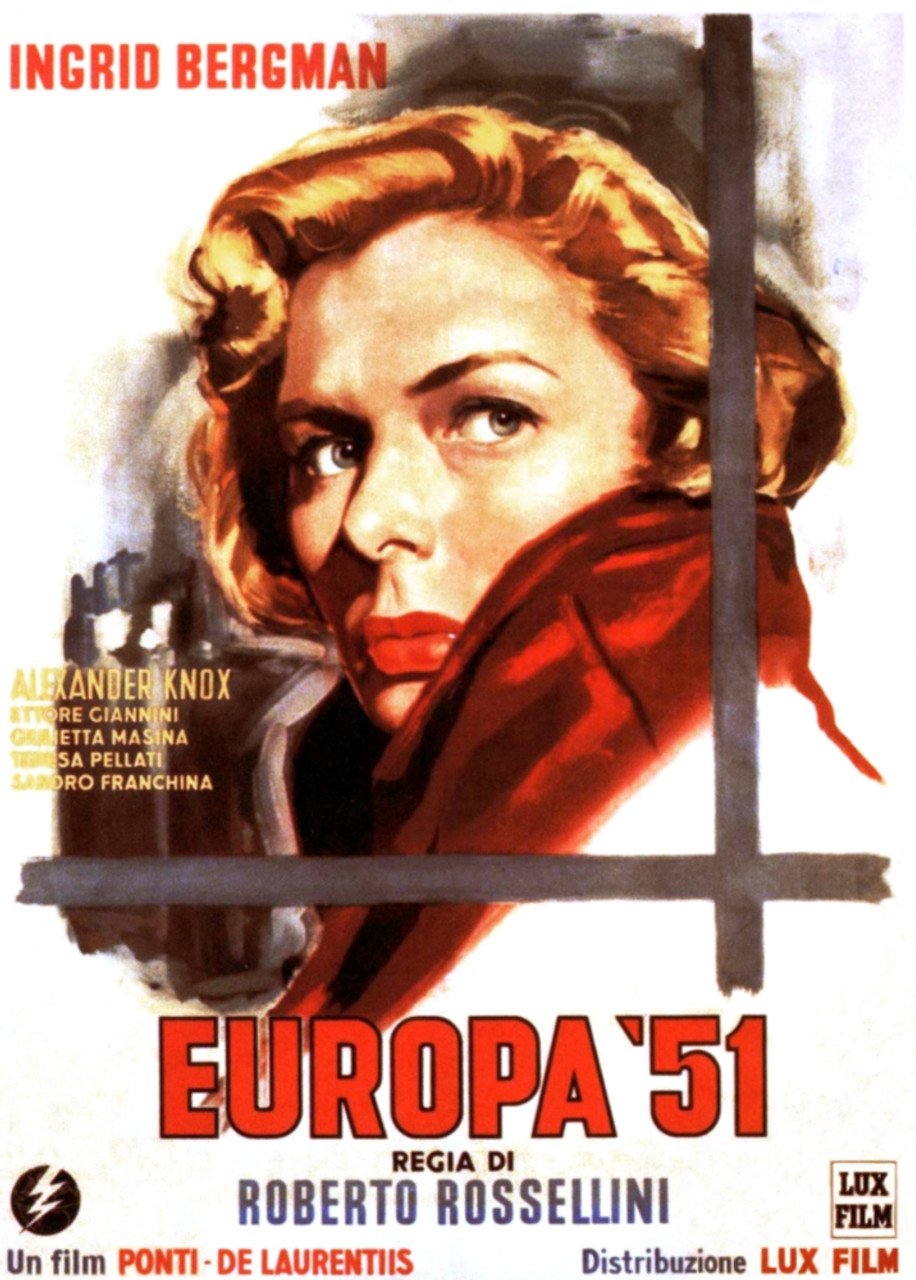EUROPA '51 (1952, dir. Roberto Rossellini, Italy) by Patrick McElroy
In Fyodor Dostoevsky’s novel The Brothers Karamazov, a character remarks “Love in action is a harsh and dreadful thing compared with love in dreams.” Rarely has this been shown on screen more effectively than in Roberto Rossellini’s 1952 film ‘Europa 51, where the love isn’t the sentimentalized love between a man and a woman, but one woman’s unconditional love for humanity.
Rossellini was one of the foundational figures in the Italian neorealist movement — along with Vittorio De Sica, and Luchino Visconti — with his unofficial war trilogy which consisted of Rome Open City (1945), Paisan (1946), and Germany Year Zero (1948). Each film consists of minimal style, mostly non-professional actors, and they reflect the daily struggles of working class people who are affected by the war.
In 1949 Rossellini embarked on his film Stromboli, where he cast one of Hollywood’s top stars Ingrid Bergman, which was seen by many as a betrayal of the neorealist movement. Scandal happened, and he was caught in an affair with Bergman. He was chastised in his home country, but that didn’t stop him from working.
While Rossellini was an atheist, he still had a fascination with religious lifestyles, and how saints lives their lives, so he made his 1950 masterpiece The Flowers of Saint Francis. This would then give him the thought, what would it take to be a saint in the modern world, which led to the development of Europa ‘51.
The film follows the wife of an industrialist, Irene (Ingrid Bergman). She begins self-centered, wrapped up in the comforts of the bourgeois lifestyle. Her life is then struck by tragedy when her son commits suicide, which leads her to emotional turmoil. This makes her recognize the sufferings of the lower class, which leads her to serving them, and being a modern Saint Francis of Assisi, which causes society to scrutinize her, and accuse her of communism.
We normally think of love as something sweet and easy, but Europa ‘51 shows how it is also sacrificial, and tough. Many saints in our time would also face persecution for standing up for justice and compassion, such as Gandhi, Dorothy Day, Martin Luther King Jr., Thomas Merton, Daniel Berrigan, Mother Teresa, The Dalai Lama, Thich Nhat Hahn, and Desmond Tutu, who all took the unpopular stance.
After witnessing the evils, and destructions of WWII, Rossellini was showing the goodness that was still in the individual person. You can be an atheist like him, or agnostic, or secular, and still be moved by the goodness of Irene. When Martin Scorsese saw this film along with The Flowers of Saint Francis, he was moved to see the subtleties of the religious overtones, compared to how it was portrayed in Hollywood films at the time. He was taken by the nature of how one lives their life a certain way, and its influence can be seen in Mean Streets, Last Temptation of Christ, Kundun, Bringing Out the Dead, and Silence. When watching this film today, one can still be moved by it, and it reminds us of the compassion we desperately need today.
Patrick McElroy is a movie writer and movie lover based in Los Angeles. Check out his other writing at: https://www.facebook.com/patrick.mcelroy.3726 or his IG: @mcelroy.patrick


